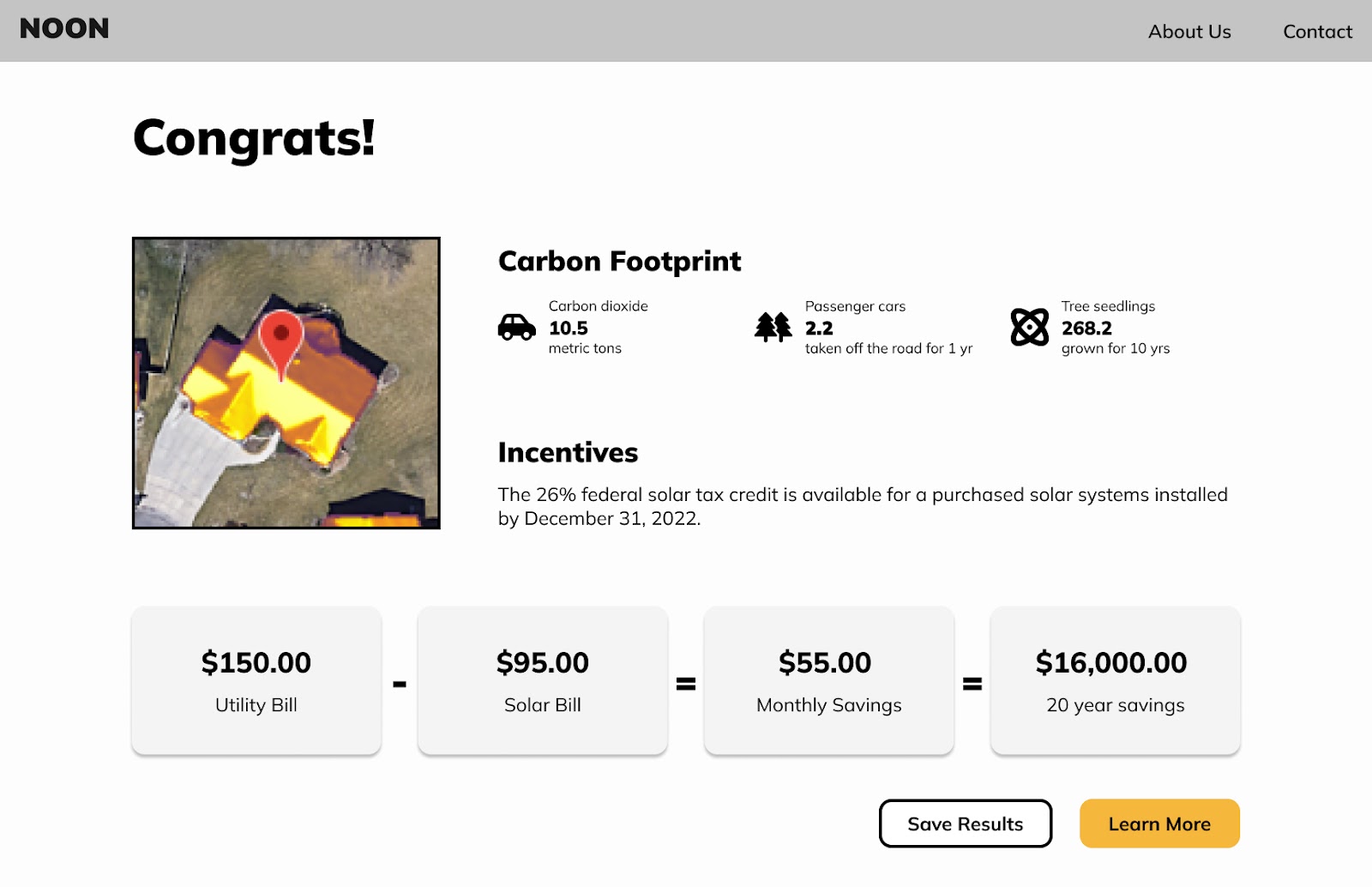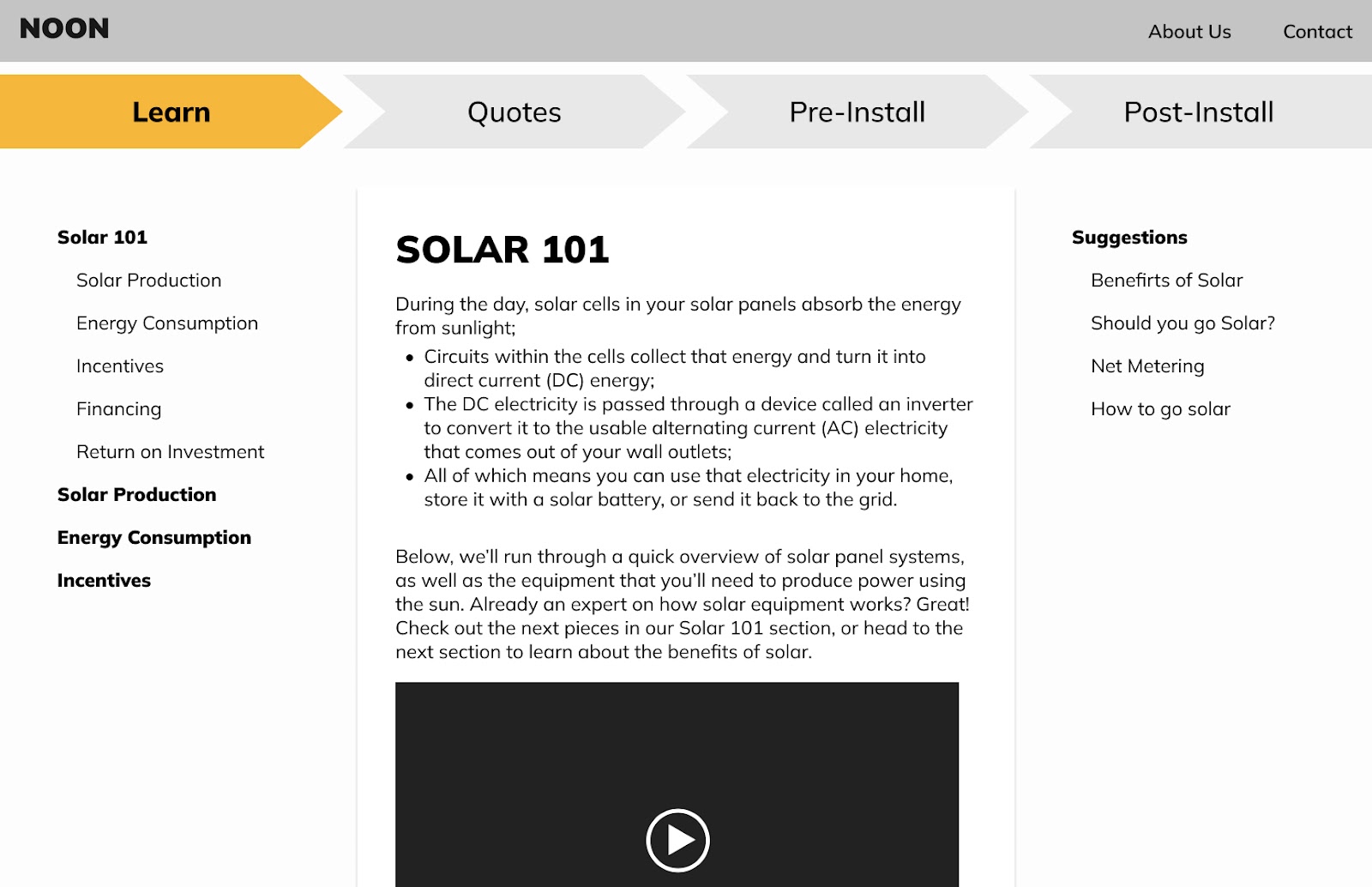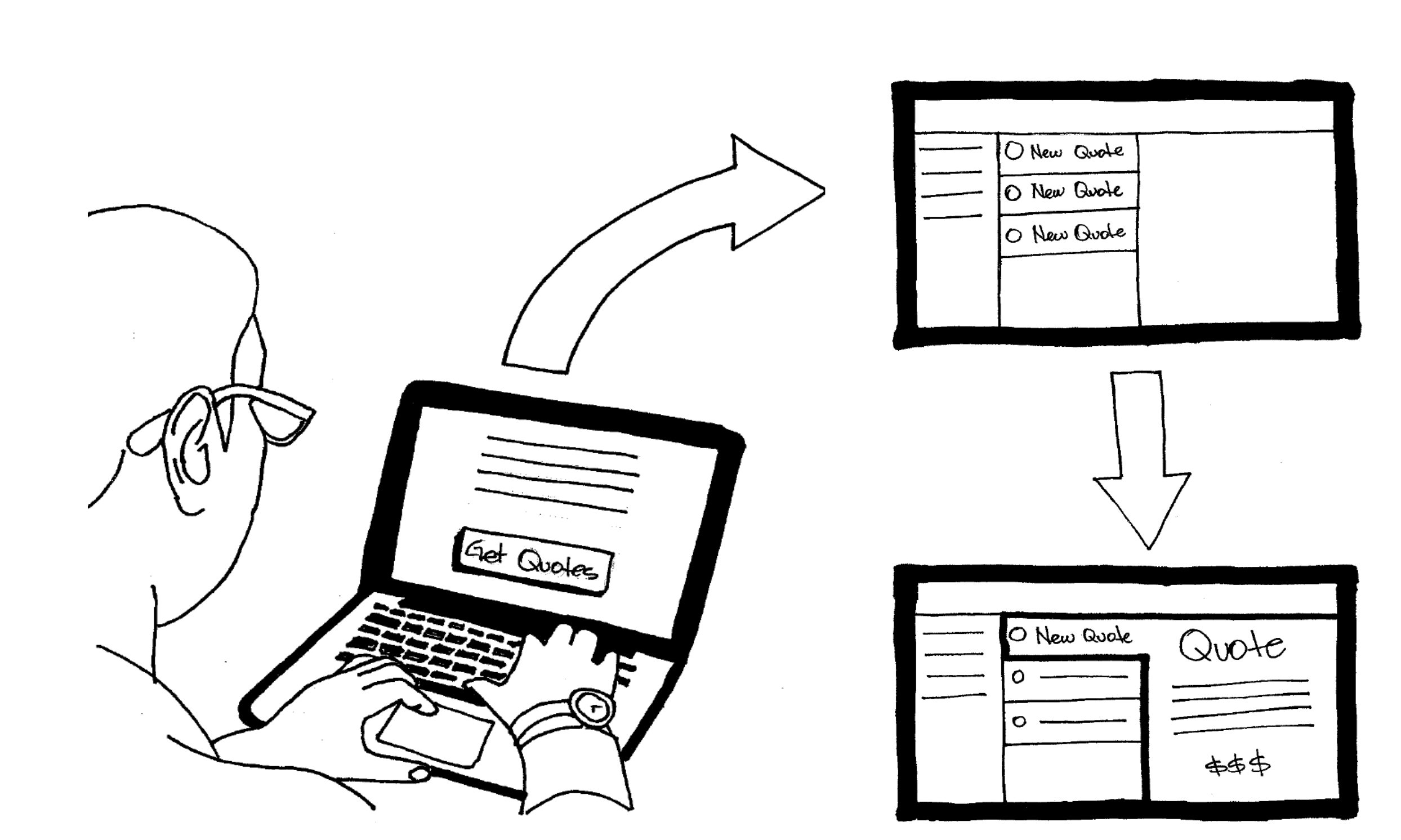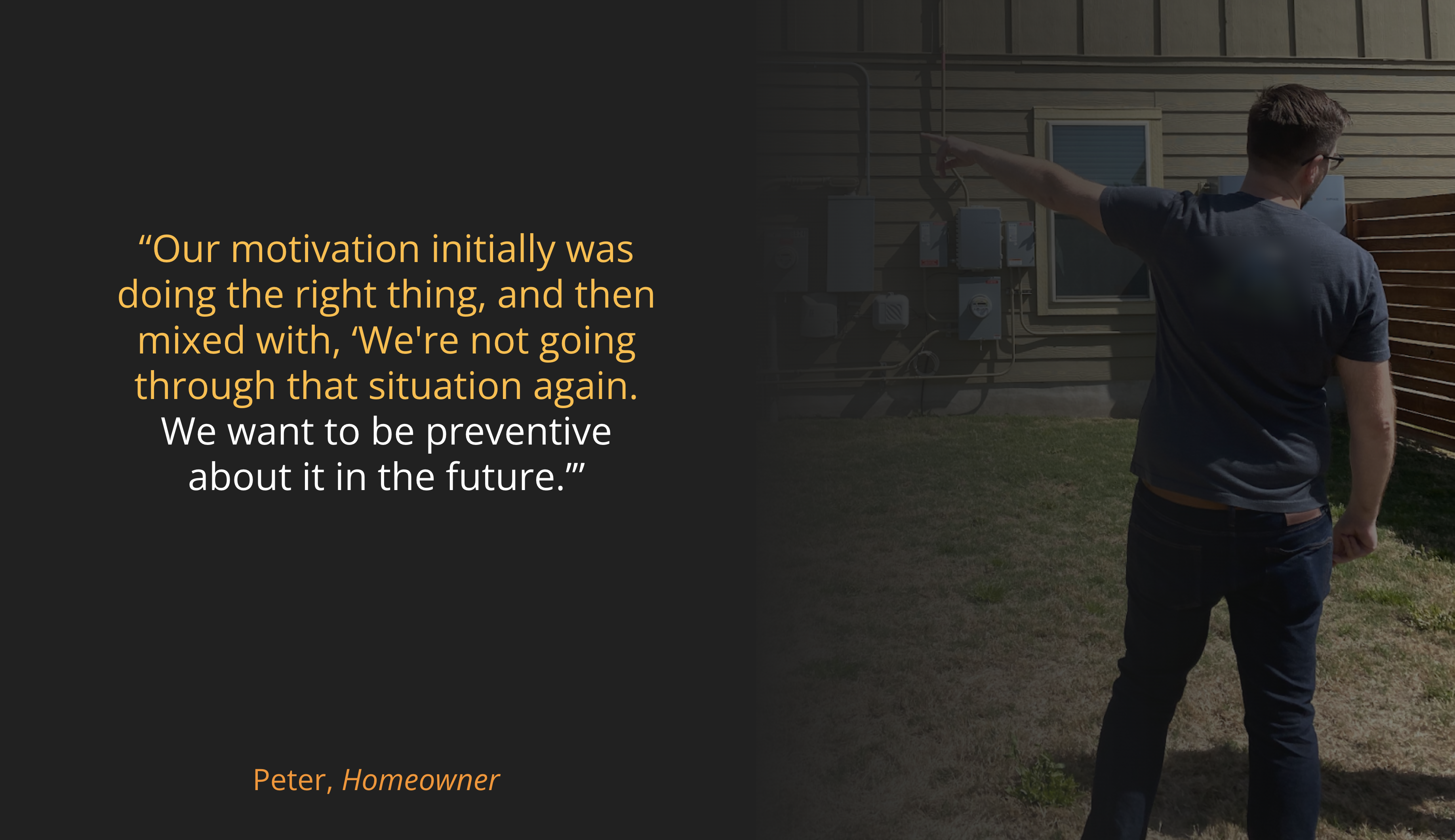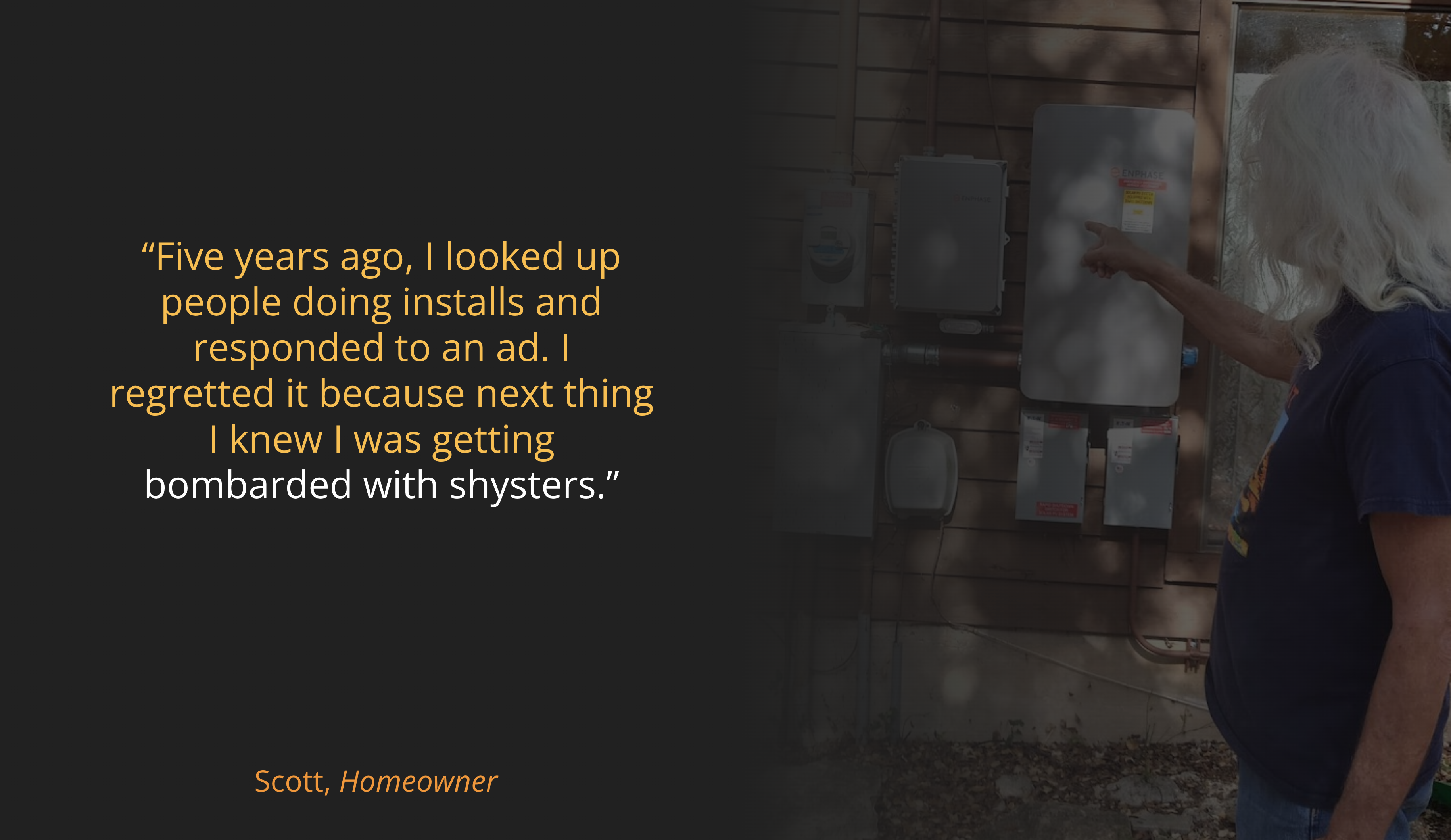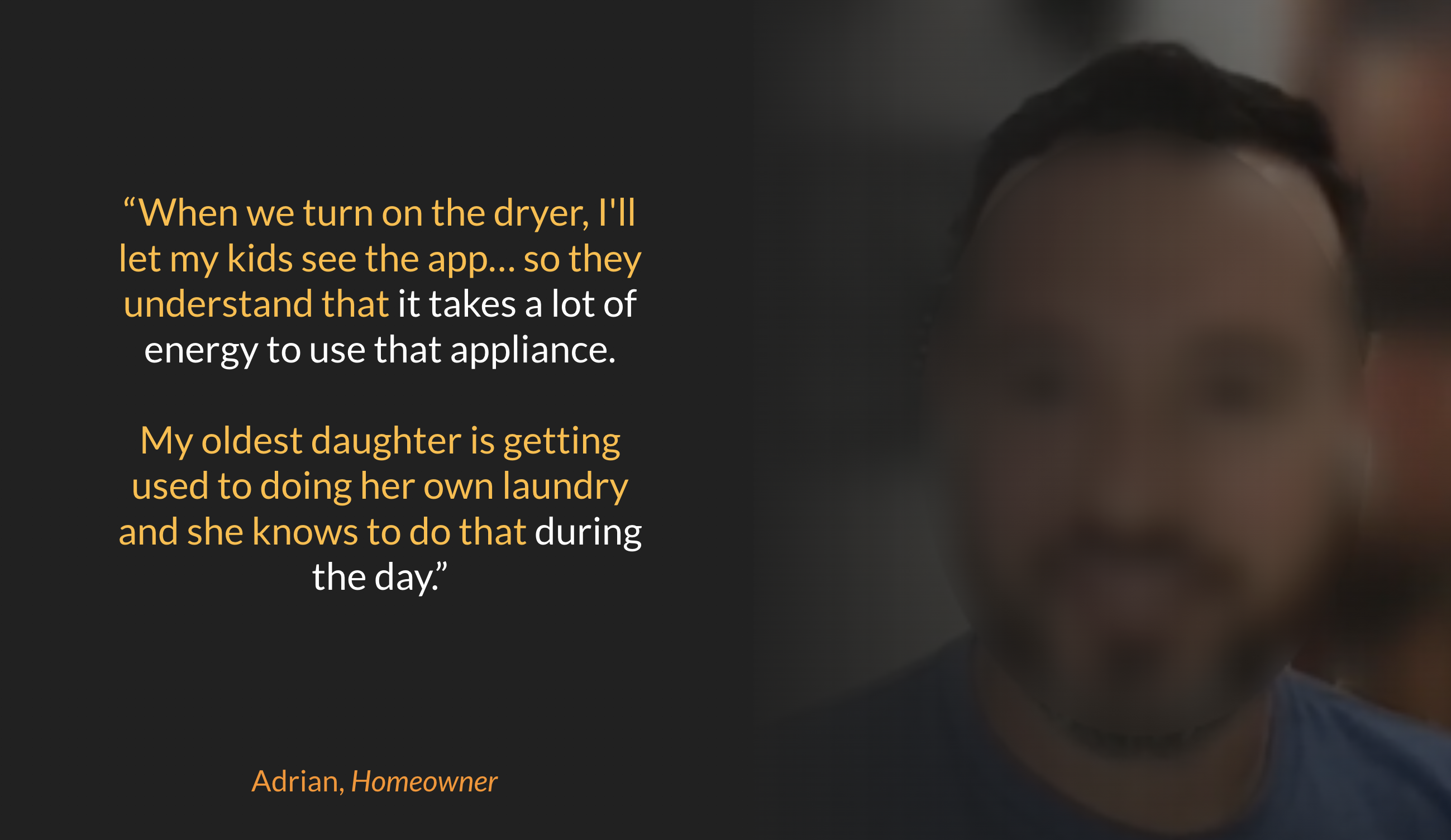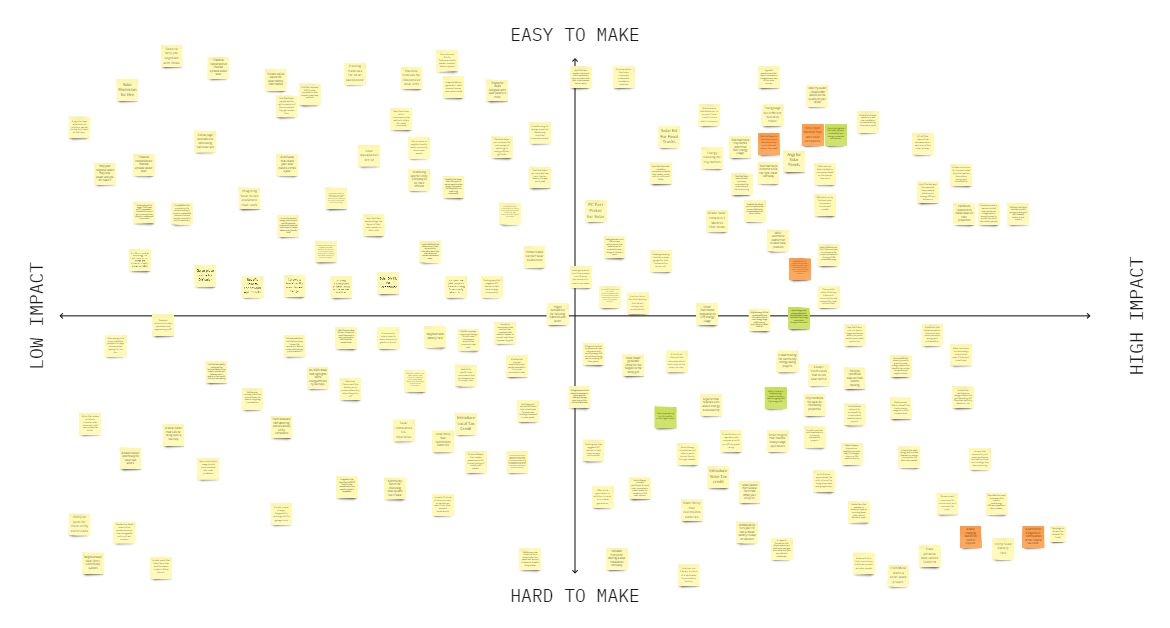Noon - Solar Learning and Marketplace
Conducted research with homeowners to understand how they learned about residential solar panels, from passive learning through installation. From there created product ideas and tested those concepts with users.
Product and Vision Statement
Noon exists to elevate the benefits of solar to the mainstream while ensuring that homeowners have all the information they need to decide if solar is right for them. We aim to educate homeowners so that they can navigate getting quotes without confusion and get the best system for their needs. No one should have a poor solar experience.
Currently, homeowners and bombarded with advertisements that oversell solar capabilities and mislead buyers on the impacts of the federal tax incentives. Door-to-door solar salespeople push them to install solar before they are ready, which leads to homeowners who are unhappy with their system and solar installers who need to chase after and educate homeowners before they are ready to purchase, leading to a high customer acquisition cost.
To achieve this outcome, we designed an educational platform and marketplace that connects homeowners with solar installers. Homeowners can use the learning tools for free. When they are ready to start getting quotes, installation companies can pay for access to their information and send them a quote.
This allows homeowners to receive quotes from multiple companies and select the one that best aligns with their needs. Installation companies benefit from getting high quality leads from homeowners who informed and ready to install solar, saving them time and money. Currently Solar companies are spending an average of $3.5K per customer on Customer Acquisition. We believe we can reduce that substantially.
Exploratory Research
Focus Statement
What have Central Texas homeowners learned in the process of transitioning to solar energy, and what were the gaps in their expectations versus the realities of their lived experience?
Research Plan
My team designed an executed a research plan to gain insight from homeowners who had already installed solar. The previous year, Texas encountered a nasty winter storm that led to the deaths of X and left millions of people without power for over a week. We thought folks in central Texas would bring a unique perspective as they thought about the adverse affects of climate change and how they might protect themselves from Texas’ un-reliable energy grid.
Our for our research were to understand:
- what motivated them to install solar
- how their finances and quality of life changed after installing solar
- the difference between their expectations before installing solar and the reality of living with panels on their roof - - if and - how their approach to sustainability has changed after installing solar
Based on secondary research, our foundational hypotheses were that:
- People trust educational materials created by businesses that profit from shaping the consumer’s perception of the service/industry they serve.
- Gaps exist between the research people do before installing solar and the actual lived experience after solar is installed.
Method #1: In depth interview
Our primary research method was in-depth interviews. It allowed us to gain perspective on the from the experience of participants and brought new insights.
Method #2: Facilitated journey map creation
We also asked participants to create a map of their learning journey through solar. We began at passive interest, and followed them all the way past installation to current day. Our goal was to chart highs and lows of the process as well as the unexpected situations that may arise.
Insights and Opportunities
Insight 1
Although people identify climate change as a key motivator for installing solar, they are ultimately pushed to action by personal incentives.
Opportunity 1
How might we position installing solar not just a social good but as a worthy personal investment?
Insight 2
Evaluating the driving principles of an installation company is critical; failing to do so leaves people vulnerable an unfavorable experience.
Opportunity 2
How might we help people evaluate the driving principles of solar companies, to guide them to a more successful outcome?
Insight 3
When people can visualize their energy consumption in real time it creates a feedback loop that empowers them to invest in energy efficiency.
Opportunity 3
How might we bring energy tracking to a wider audience, so everyone can learn about their energy consumption and adopt energy-efficient behaviors?
Concept Validation
Next, we ideated possible solutions. Our team came up with over 150 ideas, and then began prioritize the best ideas based on feasibility and impact.
We created vignettes of key moments, and storyboard concepts for the most promising ideas.
To test our concepts we presented visual storyboards and written problem statements to to homeowners who were interested in installing solar. We used their feedback to understand which concepts resonated with them and which ones needed to be revised.
Our first concept was making renewable energy visible for people who opt into renewable energy from their utility company. Ultimately, this problem wasn’t compelling enough with the participants we tested with.
Our next concept was making it easy for people to invest in the creation of community solar farms. Similar to how Robinhood democratized investing in the stock market.
Ultimately, people didn’t feel comfortable putting down the money without seeing the quick returns like they would in with other investments.
This concept was the one our test participants really resonated with. We continued to refine and began to expand how how we might first educate customers in the early part of this process. This concept turned into the product you see today.
We see connecting solar companies with homeowners as the best way to make this a sustainable product moving forward.
Impact
This school project led to an opportunity to finish the research and strategy of our project as contract work for a solar company that was interested building a marketplace. They asked us to focus on the educational tool and preparing homeowners to get quotes.
Reflection
Focus on adult learning really pushed us into creating a learning tool. Also felt constrained by solar being a physical product, and our ability as students.
